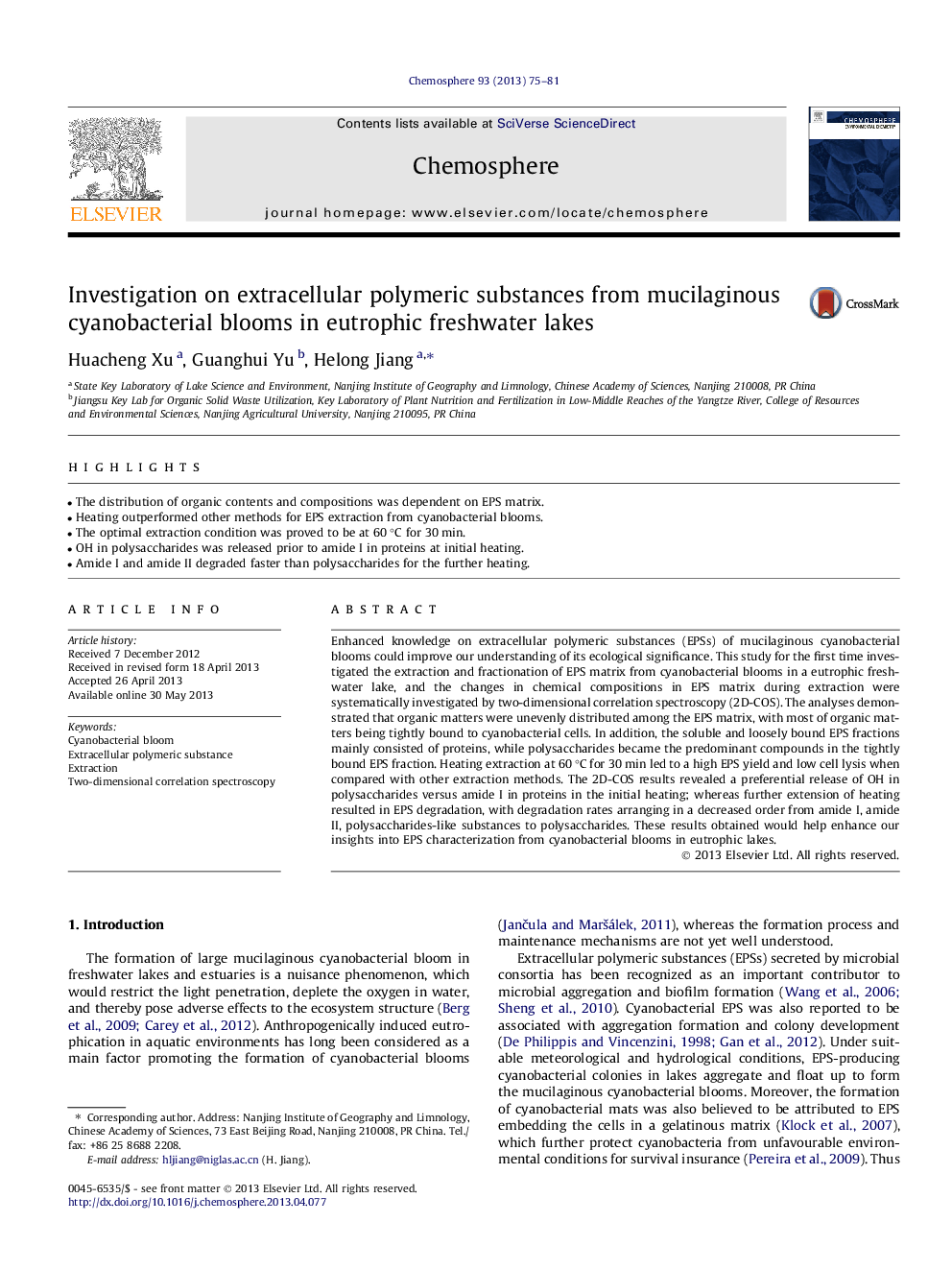| Article ID | Journal | Published Year | Pages | File Type |
|---|---|---|---|---|
| 4409014 | Chemosphere | 2013 | 7 Pages |
•The distribution of organic contents and compositions was dependent on EPS matrix.•Heating outperformed other methods for EPS extraction from cyanobacterial blooms.•The optimal extraction condition was proved to be at 60 °C for 30 min.•OH in polysaccharides was released prior to amide I in proteins at initial heating.•Amide I and amide II degraded faster than polysaccharides for the further heating.
Enhanced knowledge on extracellular polymeric substances (EPSs) of mucilaginous cyanobacterial blooms could improve our understanding of its ecological significance. This study for the first time investigated the extraction and fractionation of EPS matrix from cyanobacterial blooms in a eutrophic freshwater lake, and the changes in chemical compositions in EPS matrix during extraction were systematically investigated by two-dimensional correlation spectroscopy (2D-COS). The analyses demonstrated that organic matters were unevenly distributed among the EPS matrix, with most of organic matters being tightly bound to cyanobacterial cells. In addition, the soluble and loosely bound EPS fractions mainly consisted of proteins, while polysaccharides became the predominant compounds in the tightly bound EPS fraction. Heating extraction at 60 °C for 30 min led to a high EPS yield and low cell lysis when compared with other extraction methods. The 2D-COS results revealed a preferential release of OH in polysaccharides versus amide I in proteins in the initial heating; whereas further extension of heating resulted in EPS degradation, with degradation rates arranging in a decreased order from amide I, amide II, polysaccharides-like substances to polysaccharides. These results obtained would help enhance our insights into EPS characterization from cyanobacterial blooms in eutrophic lakes.
